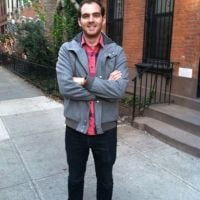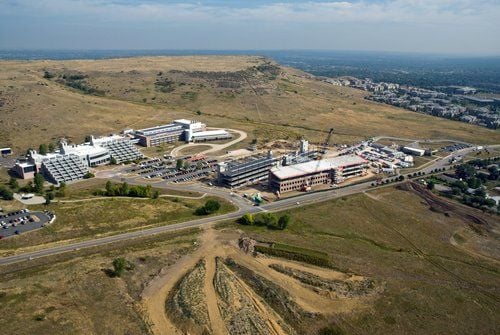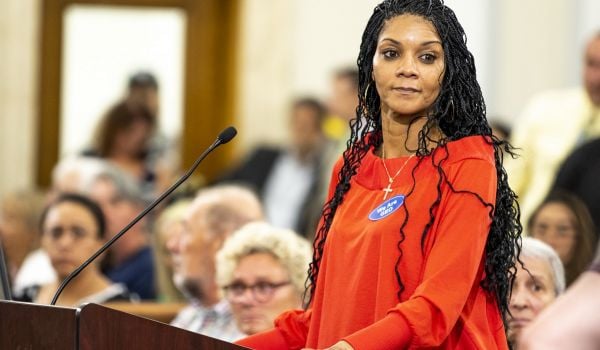There’s a lot to like about the Department of Energy’s new Research Support Facility, completed recently in Golden, a suburb of Denver. According to the government’s data, the environmentally-friendly RSF will be the largest net zero-energy consumption building in the United States thanks to an architectural design that emphasizes economies in energy use and a huge solar power production facility on top. It’s a technological feat that could change the way commercial buildings are built and eventually lead to a major reduction in overall carbon emissions in the country.
The Department of Energy is heralding it excitedly as a model for the next generation of construction projects.
Despite these achievements, however, the facility’s planners failed to construct it in a location that allows workers to take advantage of a variety of commuting options. This major blind spot in policy not only highlights the federal government’s inconsistent support for public transportation but also demonstrates that claims of reduced building energy consumption need to be evaluated on several levels beyond those directly involved in the building itself.
The RSF is located on the campus of the National Renewable Energy Laboratory, which studies a variety of techniques to reduced American dependence on fossil fuels. It began operating in 1977 on a suburban campus about ten miles from downtown Denver.
Its relatively far-off location means that workers are practically forced to get to work by automobile. Though there is a bus line that stops at the front entrance of the facility, it only arrives roughly every thirty minutes during rush hour and every hour at other times. There are few homes and even fewer stores or other businesses in the adjacent area. Unfortunately, similar conditions exist in federal facilities across the country. The Environmental Protection Agency’s huge facility (its biggest) in North Carolina’s Research Triangle Park, for instance, is cut off both from the regional transportation system and from nearby neighborhoods — despite being a “green” building.
This isolation from the surrounding urban environment may have some raison d’être, founded on the need for security, but it is in profound contrast to the government’s claims of zero-sum energy consumption. The National Renewable Energy Laboratory doesn’t even suggest public transportation options on its directions website, which is reserved for automobilists.
Considering the Department of Energy’s own statistics, which demonstrate that transportation consumes almost 30% of America’s energy production, you’d think the agency would do more to encourage the use of public transportation for workers using their facilities. And the best way to do that is to site new construction in areas that are accessible.
What makes the location of the RSF particularly disappointing is that it is relatively close to the future Denver West Corridor Light Rail line, which is now under construction and planned to open in 2013. But the more than one mile distance between stations and the laboratory campus means very few employees are likely to make an effort to commute using this new transit offering. Had the Department of Energy made a decision to prioritize alternative transportation in coordination with the construction of green buildings, it could have constructed the new RSF near a station, improving commuting options for employees. But an unwillingness to challenge the suburban-oriented status quo and the presence of the existing campus likely made that impossible.
All that said, according to National Renewal Energy Laboratory Communications Director Bob Noun, the organization has made a concerted effort to encourage alternative commuting options. The facility offers shuttle buses from park and ride locations and will expand its routes once the light rail line opens. In addition, there are several biking routes that head directly to the facility. Employees at the RSF are provided a number of financial incentives (including free transit passes) to get to work via means other than private automobile. Yet these efforts would be significantly aided if the facility were in a more convenient, walkable location.
The completion of the RSF has elicited several comparisons with Abu Dhabi’s Masdar City, whose proponents suggest will be the world’s first carbon-neutral community, made possible by efficient building design and alternative energy production facilities on site. Unlike the U.S. government’s facility in Golden, however, Masdar will feature an integrated clean public transportation system, a light rail line, and a high-speed link to downtown Abu Dhabi. No cars will be allowed. It’s a hugely ambitious project that is unlikely to be completed in the slower-moving U.S., but its insistence on both building construction and transportation provision as both important to the creation of truly environmentally friendly places is something we must learn to emulate.
Disclaimer: This column has been edited since it was originally published to correct mistakes in the first article. The first version incorrectly stated that there is no bus service that comes to the front of the facility, and failed to mention efforts to encourage commutes through shuttle services and biking.

Yonah Freemark is a senior research associate in the Metropolitan Housing and Communities Policy Center at the Urban Institute, where he is the research director of the Land Use Lab at Urban. His research focuses on the intersection of land use, affordable housing, transportation, and governance.
















